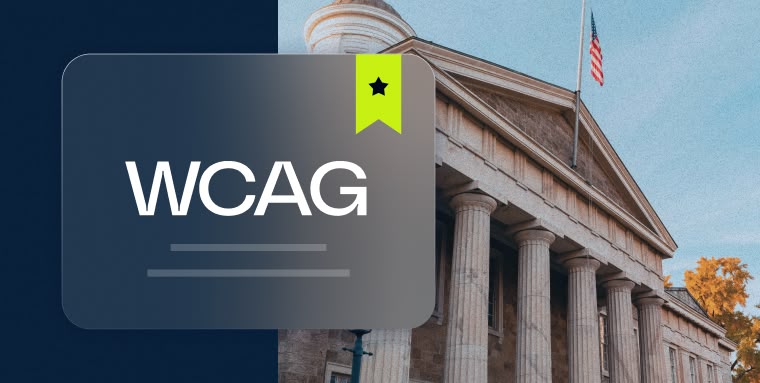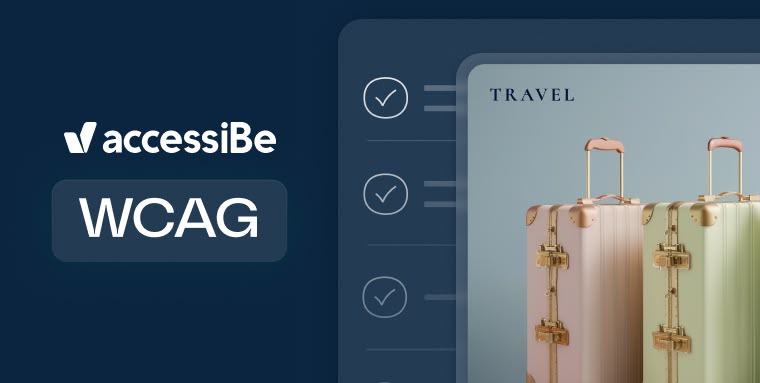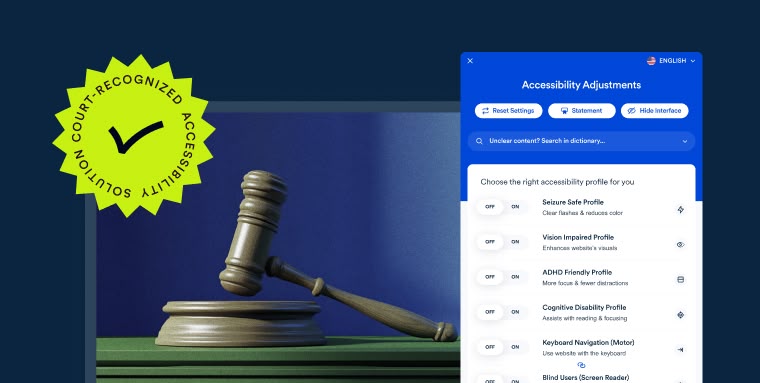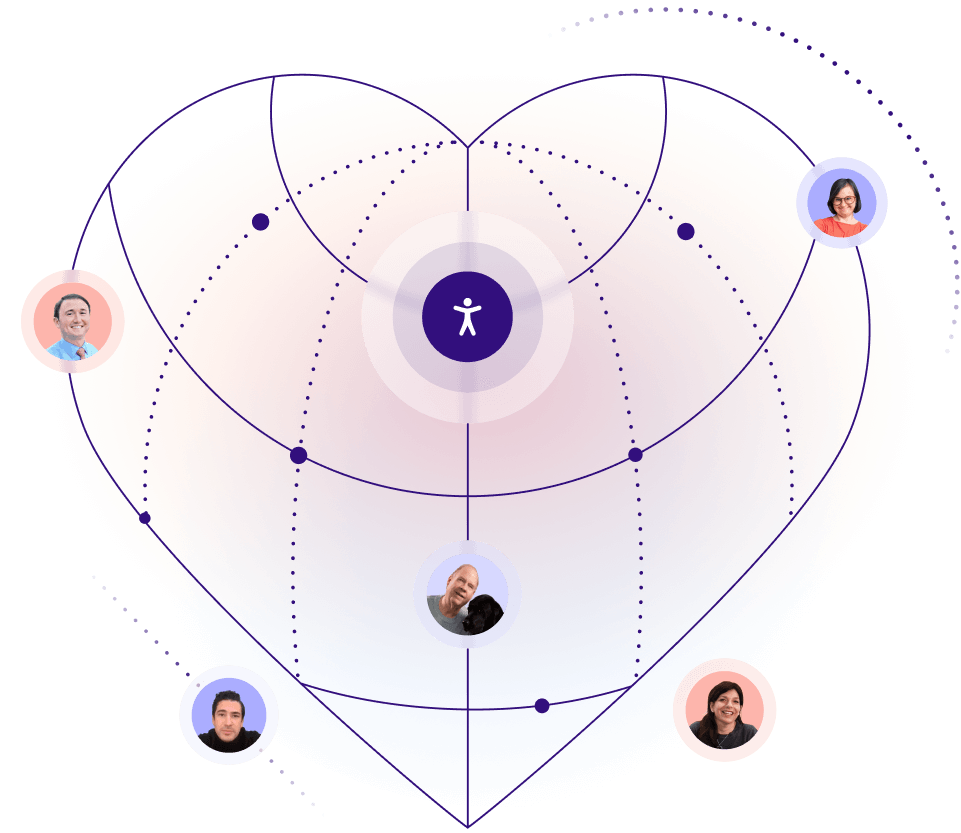If you're looking into how to make your website accessible—and legally compliant—you've likely come across two important acronyms: ADA and WCAG.
The Americans with Disabilities Act (ADA) is the U.S. law that prohibits discrimination against people with disabilities, including in digital spaces. Meanwhile, WCAG, or the Web Content Accessibility Guidelines, are the global gold standard for web accessibility.
Understanding how these two relate—and what each means for your business—is essential; whether you’re aiming to reduce legal risk, improve your user experience, or both.
In this guide, we’ll break down the relationship between the ADA and WCAG, explain how compliance works, and show how tools like accessiBe can support your accessibility goals.
1. The ADA is a law. WCAG are standards.
The Americans with Disabilities Act (ADA) is a law enacted to protect the rights of people with disabilities. Title III of the ADA, relevant to businesses’ categorized as “public accommodations” (which is most public-facing businesses), is now widely applied to websites, as well. What this means is that relevant businesses must ensure their websites are accessible to people with disabilities, under the ADA.
WCAG, on the other hand, exists independently from the ADA. Developed by the World Wide Web Consortium (W3C), the Web Content Accessibility Guidelines (commonly referred to as WCAG) are leaned upon by organizations looking to create inclusive digital environments, regardless of whether they are legally obligated to do so.
There are three versions of WCAG: WCAG 2.0, WCAG 2.1, and WCAG 2.2.
Each version of WCAG offers three levels of conformance website owners can adhere to:
- Level A: The most basic level of accessibility
- Level AA: A higher level of accessibility
- Level AAA: The highest level of accessibility and most difficult to achieve
To learn more about WCAG, we recommend you check out this guide.
2. U.S. courts point to WCAG when interpreting the ADA

Although WCAG isn’t formally written into law, U.S. courts consistently refer to it when ruling on website accessibility cases under the ADA.
In most rulings, courts point to WCAG 2.0, 2.1, or 2.2, at Level AA conformance, as the benchmark for determining whether a website is accessible.
In short: If you're aiming to comply with the ADA, WCAG 2.1 Level AA is the standard to adhere to.
While the Department of Justice (DOJ) has not officially codified WCAG as the legal standard, it has repeatedly referenced it—including as recently as April 2024—when offering guidance and enforcing ADA compliance in digital contexts.
3. accessiBe helps you meet WCAG standards under the ADA

accessiBe offers a range of tools designed to help organizations meet legal requirements in adherence to WCAG guidelines:
accessWidget helps address core WCAG requirements on your website, such as enabling screen reader compatibility and keyboard navigation, through AI-powered auditing and remediation.
accessServices provides expert-led support for digital assets that require human intervention—such as document remediation, video captioning, and custom accessibility fixes.
For teams looking to build accessible experiences from the ground up, accessFlow is a developer-focused platform that helps detect, prioritize, and resolve accessibility issues throughout the entire web development lifecycle.
Press here to learn more about accessFlow.
Enhanced customization and legal support
For businesses with more complex accessibility needs—such as custom functionality, dynamic content, or stricter compliance goals—accessiBe’s Scale and Enterprise plans offer additional resources. These include:
- Manual audits by certified accessibility experts
- Custom remediation plans tailored to your site’s unique structure, content, and functionality
- Ongoing expert guidance to help maintain long-term accessibility
Blending human expertise with cutting AI, these services help you address more nuanced accessibility barriers that may be unique to your website or industry.
In addition to technical support, accessiBe’s premium plans also include litigation support—designed to help you navigate legal challenges with confidence.
This includes:
- A dedicated case manager to help manage your response
- A monetary pledge (starting at $15,000)
- A consultation with a top ADA attorney (available on Scale and Enterprise plans) to help assess the case and prepare your legal strategy
To learn more about accessiBe’s Litgiation Support, press here.

In a recent case involving an accessiBe customer, United States District Court for the Eastern District of New York recognized accessWidget as a measure that promotes accessibility.
Leveraging accessiBe’s Litigation Support, the defendant successfully proved how accessWidget helped him adhere to key WCAG guidelines under the ADA.
Dismissing the case, the judge ruled that the defendant’s ‘use of an accessibility widget”, was "sufficient to assure the Court that there is no reasonable expectation that the issues purportedly identified by Plaintiff will recur."
Learn more about this case by pressing here.
Take action
Digital accessibility isn’t just a best practice—it’s a legal obligation and a commitment to inclusivity.
Understanding how the ADA and WCAG work together is the first step.
Taking action to align your website with WCAG 2.1 Level AA is how you demonstrate that commitment—both to your users and in the eyes of the law.
Whether you're building a strategy from scratch or looking to strengthen your existing efforts, accessiBe can support you every step of the way—with automation, expert audits, and legal backing when it matters most.
Press here to speak to an expert.




